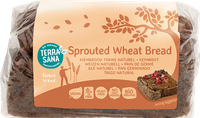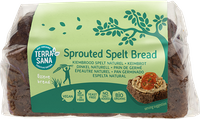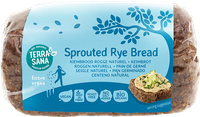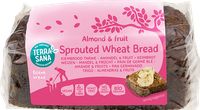Bread without yeast or sourdough, is that possible?

Sprouted bread: Essener, Manna, or Ezekiel
Sprouted bread is also known as Essener, Manna, or Ezekiel bread. While not widely known in the Netherlands, sprouted bread has been around for centuries. The Essenes, a Jewish group, made their bread this way over 2000 BC.
How is sprouted bread made?
The process of making sprouted bread takes several days. First, we allow the grains of rye, wheat, or spelt to sprout slowly. Sprouting refers to the formation of small sprouts or germs when grains are soaked in water for 2-3 days. We intentionally use whole grains to retain as many nutrients and fibers as possible. After the sprouting process, we grind the grains into dough and bake it at a low temperature in the oven (110°C-130°C). The bread is then pasteurized at a temperature of 70°C-95°C, giving it a shelf life of up to 8 months. This way, you can always have a loaf on hand!

High nutritional value
Sprouted bread is very firm and dense. A 10 by 5 cm slice weighs a substantial 400 grams. This makes the bread super nutritious, and you’ll feel satisfied after only 1 or 2 slices. It’s an ideal option for a quick, healthy lunch or a powerful post-exercise boost.
Difference in structure
We often get asked why the structure of each slice varies. Sometimes they are delightfully creamy and easy to cut, while other times they can be drier and crumble easily. Sprouted bread is not an easy product to make. It remains a biological natural product, and we are somewhat dependent on the weather and nature. Rye and wheat absorb water quite well during the sprouting process, resulting in creamy slices most of the time. However, with spelt, it’s a different story. Due to the grain’s outer casing, spelt absorbs water less efficiently, sometimes causing the germination to stop too soon.
How to use sprouted bread
Want to know the secret to making this bread truly irresistible? Try toasting the slices in a sandwich maker. It elevates the flavor to another level while maintaining the perfect texture. Enjoy it with butter and cheese. If you’re vegan, go for avocado with hemp seed go, or cashew paste with a mini bite mugi miso. More of a sweet tooth? Then mix peanut butter with maple syrup and spread it on your sprout bun. To enjoy!



